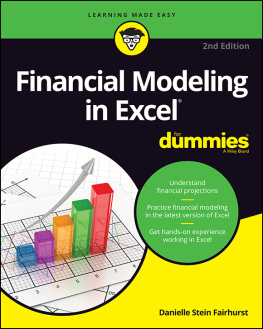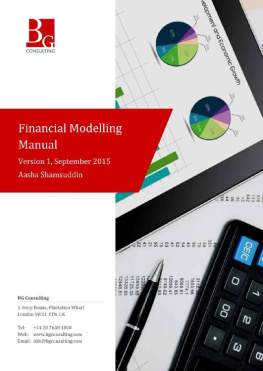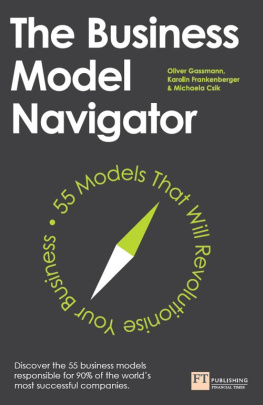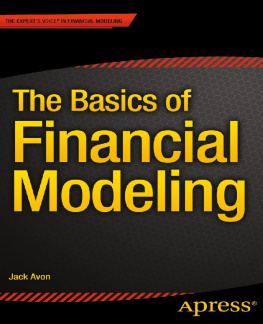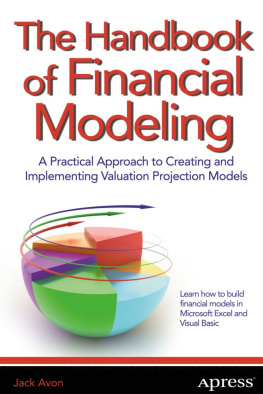GUIDE TO BUSINESS MODELLING
OTHER ECONOMIST BOOKS
Guide to Analysing Companies
Guide to Business Planning
Guide to Economic Indicators
Guide to the European Union
Guide to Financial Management
Guide to Financial Markets
Guide to Hedge Funds
Guide to Investment Strategy
Guide to Management Ideas and Gurus
Guide to Organisation Design
Guide to Project Management
Guide to Supply Chain Management
Numbers Guide
Style Guide
Book of Obituaries
Brands and Branding
Business Consulting
Business Strategy
Buying Professional Services
The City
Coaching and Mentoring
Doing Business in China
Economics
Emerging Markets
Headhunters and How to Use Them
Mapping the Markets
Marketing
Organisation Culture
Successful Strategy Execution
The World of Business
Directors: an AZ Guide
Economics: an AZ Guide
Investment: an AZ Guide
Negotiation: an AZ Guide
Pocket World in Figures

GUIDE TO BUSINESS MODELLING
3rd edition
John Tennent and Graham Friend

PUBLICAFFAIRS
New York
The Economist in Association with Profile Books Ltd. and PublicAffairs
Copyright The Economist Newspaper Ltd, 2001, 2005, 2011
Text copyright John Tennent and Graham Friend 2001, 2005, 2011
Third edition published in 2011 by Profile Books Ltd. in Great Britain.
Published in 2014 in the United States by PublicAffairs, a Member of the Perseus Books Group
All rights reserved.
No part of this book may be reproduced, stored in or introduced into a retrieval system, or transmitted, in any form or by any means (electronic, mechanical, photocopying, recording or otherwise), without the prior written permission of both the copyright owner and the publisher of this book, except in the case of brief quotations embodied in critical articles and reviews. For information, address PublicAffairs, 250 West 57th Street, 15th Floor, New York, NY 10107.
The greatest care has been taken in compiling this book. However, no responsibility can be accepted by the publishers or compilers for the accuracy of the information presented.
Where opinion is expressed it is that of the author and does not necessarily coincide with the editorial views of The Economist Newspaper.
While every effort has been made to contact copyright-holders of material produced or cited in this book, in the case of those it has not been possible to contact successfully, the author and publishers will be glad to make amendments in further editions.
PublicAffairs books are available at special discounts for bulk purchases in the U.S. by corporations, institutions, and other organizations. For more information, please contact the Special Markets Department at the Perseus Books Group, 2300 Chestnut Street, Suite 200, Philadelphia, PA 19103, call (800) 810-4145, ext. 5000, or e-mail .
Typeset in EcoType by MacGuru Ltd
Library of Congress Control Number: 2014932068
ISBN 978-1-61039-511-3 (EB)
First Edition
10 9 8 7 6 5 4 3 2 1
Contents
Business models have become the primary tools for the financial analysis of nearly all major business decisions. However, the structure and design of most models have evolved without reference to an effective business-modelling methodology. In writing this book we hope to provide the terms of reference for best-practice business modelling.
The structure and content of the book have been derived from our years of experience of working with business models and training others in the art of business modelling. We set out to describe the essential principles that underpin the building of any business model, the scope of what you want a model to do, the elements that need to be included in it, the most useful spreadsheet functions to incorporate, and how you go about testing a model to ensure that it works, is reliable and is easy to use. In short, we have tried to produce a concise, accessible and relevant guide that touches on every aspect of business modelling. We also hope that we have succeeded in conveying our passion for building effective decision support tools and that this guide will help others to enjoy creating a virtual world where they can explore and evaluate their business ideas.
A book with so many formulae, like a business model, must be accurate if it is to be useful. This book has been through several detailed checking stages. If you identify any errors that have slipped through the net please inform us, or the publisher, so that we can correct them in the next edition. Furthermore, in such a fast-developing field, we would welcome feedback from readers of any kind that will help us improve the book and make it even more useful in the future. You can contact us at the e-mail addresses below.
All books, but perhaps this more than most, are not just the work of the authors but also the result of the contributions of many others. We would like to thank our publishers for the support they have given us, particularly Penny Williams, for her role in editing the book, and Jonathan Harley, who did the page make-up. Special thanks are due to Derek and Jennifer Friend for their invaluable contributions in reading, checking and commenting on the various drafts the book went through, and to Jonathan Crofts, who patiently worked through all the Excel examples. Lastly, we are grateful to all of our colleagues and clients who gave us the opportunity to develop our thinking and our own business modelling skills.
To get the most out of this book, go to www.guidetobusinessmodelling.com where there are a range of examples to download and details of any errors or corrections.
John Tennent and Graham Friend, May 2011
In organisations, from self-employed sole traders through to major multinational companies, new projects, strategies or business plans require a financial or commercial evaluation. The analysis is produced by the creation of a business model in a spreadsheet. Unfortunately, great business ideas do not always receive the support they deserve. The business models that provide the commercial justification are often poorly structured and, in some cases, simply inaccurate. The result is a misleading view of financial strength. This book provides a guide to the development of business models that is relevant to all sizes of organisation and business modelling situations. It examines all the common aspects of a business model, such as forecasting the size of a market, capital investment and working capital through to developing an income statement, a balance sheet and valuation. The later chapters of the book show how a few basic macros (programming routines) can turn a simple spreadsheet into an impressive business application.
HOW MODELS SUPPORT DECISION-MAKING
Models can be used to help with all kinds of business decisions. In todays complex and fast-moving business environment, firms may have a wide variety of strategic and operational choices. A business model helps managers to explore complex choices, using sets of assumptions to represent alternative future operating environments. It also helps to develop a clearer understanding of the inherent pattern of relationships between the assumptions and the likely outcomes. In the end, it is the judgment of the decision-makers that is crucial, but a well-designed model can make the exercise of that judgment easier. A model can help with all three stages of decision-making: analysis, choice and implementation.
Analysis
A business model will become a virtual reality representation of how a real business opportunity will develop. To enable this virtual world to be as realistic as possible, it needs to be logically constructed from a set of assumptions that covers each influencing factor. These factors include both the business environment (for example, inflation, potential customers and taxes) and the organisation (for example, product prices, staff numbers and product volumes).
Next page

